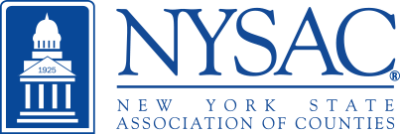 It’s tax day, and the New York State Association of Counties (NYSAC) has released a new report that presents an overview of federal, state and local taxes in New York State. While the report does not delineate where all of our taxes go, specifically, it does provide a breakdown of the income, property and sales taxes that New Yorker’s pay to which levels of government. The report was developed to provide background for the recently enacted federal and state tax laws, particularly as counties, schools, and local governments consider creating charitable trusts to accept contributions in place of property taxes.
It’s tax day, and the New York State Association of Counties (NYSAC) has released a new report that presents an overview of federal, state and local taxes in New York State. While the report does not delineate where all of our taxes go, specifically, it does provide a breakdown of the income, property and sales taxes that New Yorker’s pay to which levels of government. The report was developed to provide background for the recently enacted federal and state tax laws, particularly as counties, schools, and local governments consider creating charitable trusts to accept contributions in place of property taxes.
NYSAC’s report can be accessed at www.nysac.org/taxation.
“The elimination of the state and local tax deduction is unprecedented and an intrusion into state and local taxation. Since the national tax code was implemented, the federal government has enabled the deduction of state and local taxes. As a result of the SALT elimination, some New Yorkers will end up paying more in federal taxes,” said NYSAC Executive Director Stephen J. Acquario. “In response, Governor Andrew Cuomo and legislative leaders have put in place a mechanism that may help local property taxpayers who would be negatively affected by the federal tax law changes. Before local elected officials decide to enact charitable trusts at the local level, they need to consider the state’s overall taxing structure.”
 In New York, local governments raise revenue through property taxes and sales taxes. Counties deliver and fund a wide array of state programs, including Medicaid, welfare, probation, children with special needs and pension costs. The cost of these state mandated programs equaled about 92 percent of county property taxes levied in 2016. The rest of the county’s property tax revenues and sales tax revenues fund local programs. At the state level, New York raises revenue primarily through income taxes and sales taxes.
In New York, local governments raise revenue through property taxes and sales taxes. Counties deliver and fund a wide array of state programs, including Medicaid, welfare, probation, children with special needs and pension costs. The cost of these state mandated programs equaled about 92 percent of county property taxes levied in 2016. The rest of the county’s property tax revenues and sales tax revenues fund local programs. At the state level, New York raises revenue primarily through income taxes and sales taxes.
“Prior to the federal tax reforms, taxpayers who itemized their deductions could reduce their federal taxable income by deducting the amount they pay in state and local taxes. In NYS, about 34 percent of tax filers itemize, and the average amount they claimed is nearly $36,000—the highest in the nation. About two-thirds of these deductions are related to state and local taxes (SALT). Under the new federal law, these SALT deductions are now limited to $10,000,” according to the NYSAC report.
In response to this new cap and its impact on the many of the state’s tax filers, state leaders restructured New York’s tax code to reduce its reliance on income and property taxes. Instead, the state will allow employers to implement a payroll tax, instead of state income taxes, based on a percentage of the salaries of their employees. In addition, the state will also create statewide charitable foundations to allow state income taxpayers to donate to one of three specific foundations that serve a health, education or higher education purpose in exchange for a state income tax credit. On the property tax side, new laws have been enacted that will allow school districts, counties, cities, towns and villages to create charitable entities that will accept contributions in exchange for a local property tax credit.
Before creating these new charity foundations, local leaders “need to consider administrative complexity, how many of their taxpayers will be impacted and IRS implications, among other critical issues,” the report says. The report includes a table developed by the New York State Office of the State Comptroller that shows the percentage of taxpayers who itemize in each county, the average amount they itemize, and their major deductions.


















